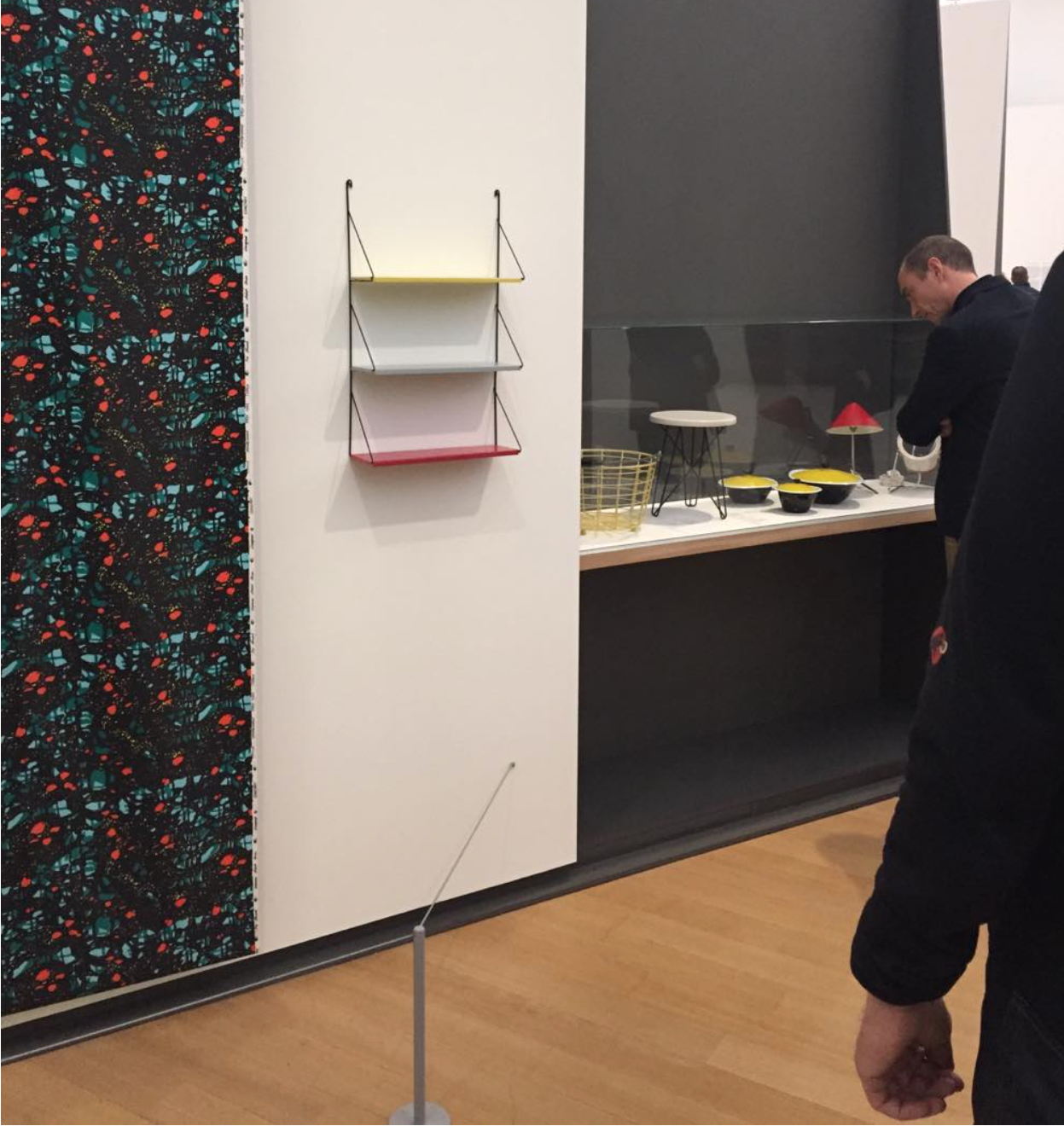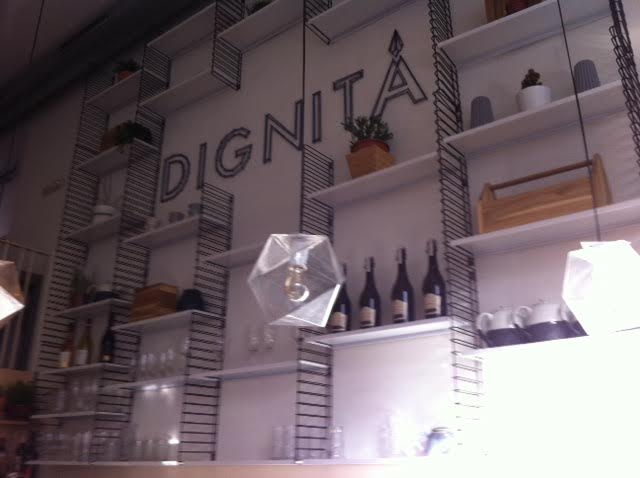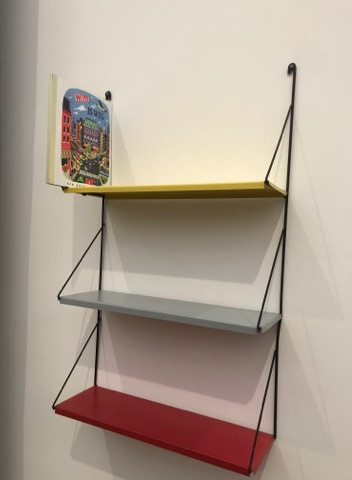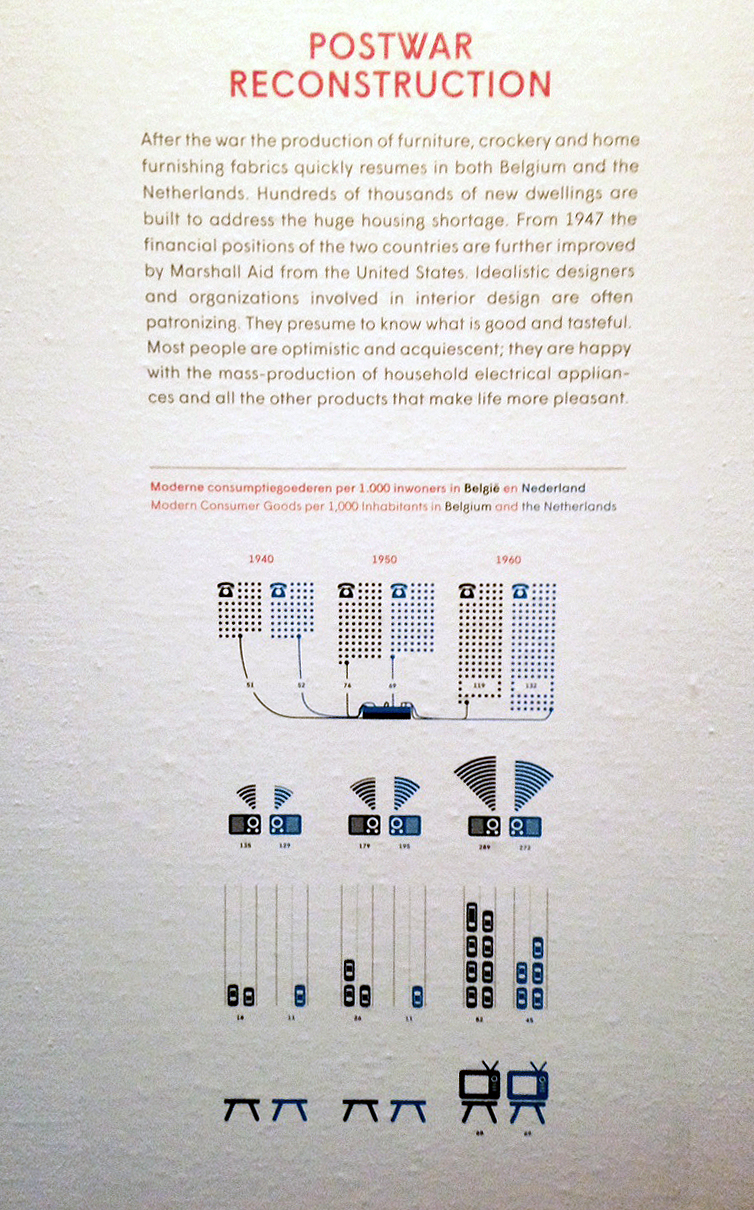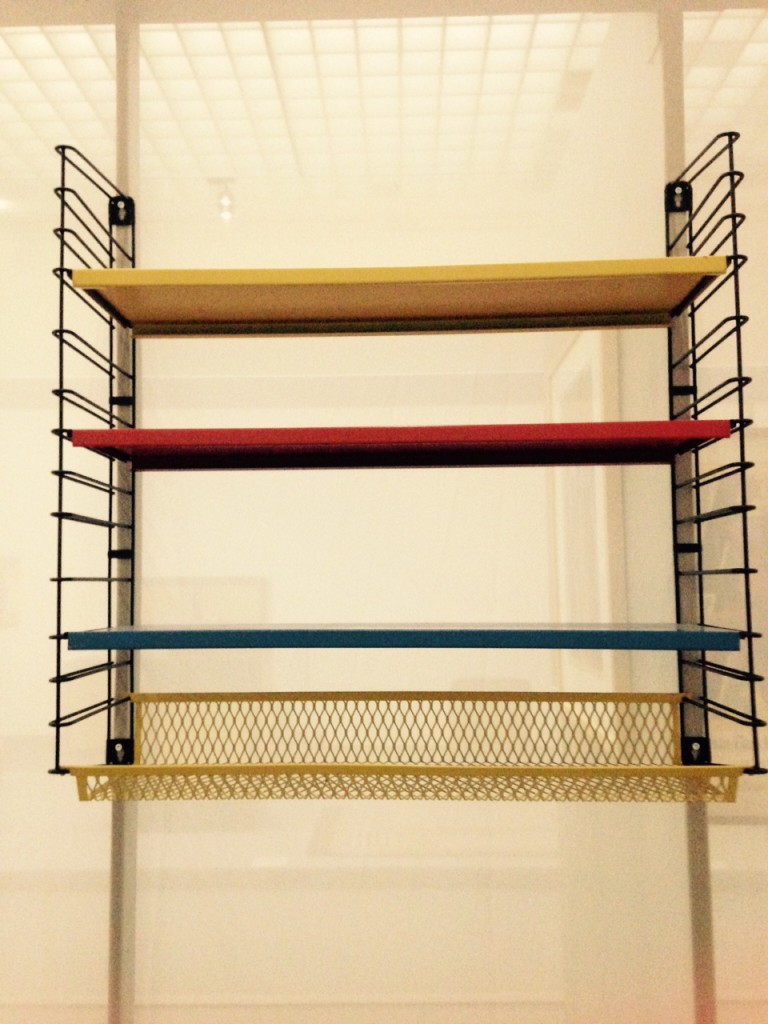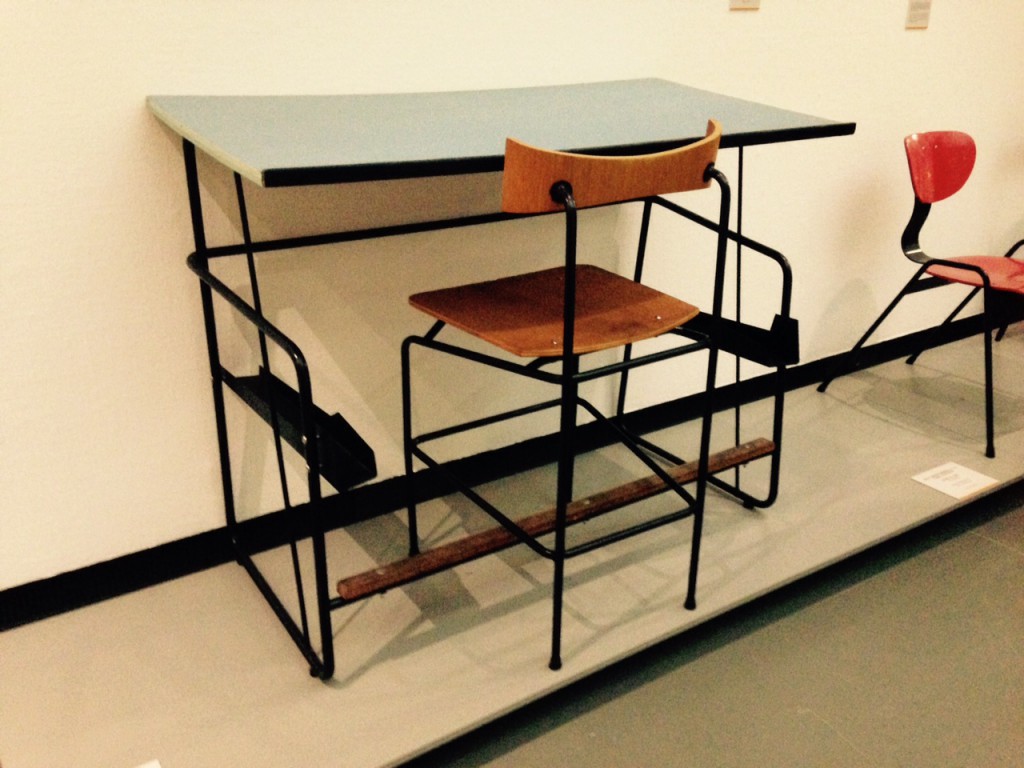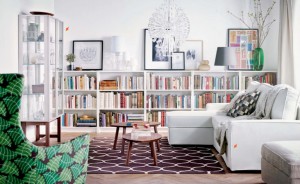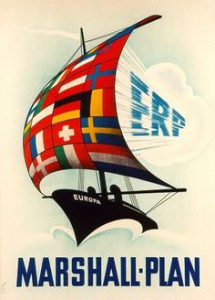I decide to fracture the Stedelijk’s linear path of the new “Base” collection, on a personal/performative dérive, I notice an object, ‘Bookshelf – 1960 – Unknown’ it hangs politely and awkwardly in a small amount of white space in-between a series of wallpaper like paintings by the situationist artist Constant and a collection of Post-War Dutch Design by Jan Van Der Togt. From the bottom up, 3 different coloured rectangular shelves are spaced evenly and fitted onto a thin steel frame, the frame extends an extra 2-3 inches as it curves tightly around 2 nails that are protruding from the wall.The colours, pale reds and yellow and a light grey, a great post-modern colour strategy, they look like faded colours of a Mondriaan.
The object was created by the Tomado Company. Tomado is a design company that was very popular in the Netherlands. It has now recently had a resurgence in popularity leading to a very sleek and minimal book being printed called “TOMADO – Van der Togt’s Mass articles Dordrecht 1923-1982” I was very eager to read this until I realised that it was only printed in dutch. The online space were I tried to find sources were also very barren, almost all of the pages where only hosted on Dutch domains that have to get translated via google once you loaded the web page. I didn’t want to struggle with some poorly translated foreign articles so I decided the only way I could get into true contact with this design was through…
1)The Museum – An easily accessible yet unreal space.
2) People – People have experienced real space, people are harder to access. People don’t have large doors where you can enter and exit.
I had heard from Dutch tutors and Dutch friends’ mothers about small experiences with Tomado and offcuts from its history, from what I patched together, Tomado created must have furniture in post-war dutch life because of how cheap it was to produce and purchase. With the popular flat pack system being championed by IKEA at the time, Tomado began to follow suit and made there furniture nomadic; it was easily transportable outside the house AND due to the design only requiring two nails, it became easy to transport in the inside spaces of the architecture. The Netherlands was also greatly improving it’s social housing meaning that instead of families living together in one room, the members of the family dispersed into the different rooms of the house. Children for the first time ever had their own rooms, and with that their first design objects, their first Tomado.
I wanted to see the object in a different space, I used the city for this. Armed only with a creased A4 photograph of the mystical bookshelf and the phrase “Ik spreekt Engels?” I started looking for Furniture stores. I spotted my first piece(s) of tomado furniture accidentally in the window of a coffee shop.
The whole inside wall was littered with the same tomado shelf, around 15 of them, they were hung in a way so that it emphasised the logo “DIGNITA” in thick two-line wall lettering. On the shelves there were bottles of prosecco and cacti that were way out of the reach of any human to grab. This reminded me a lot of how the Stedelijk had exhibited the furniture, it was devoid from any human interaction. I asked where they got the Tomado from and they gave me directions to Overtoom. Here I met a nice Dutch woman who said she does have Tomado objects in sometimes, but it usually goes within “seconds”. I asked her if she used to have any of the furniture when she was growing up and she replied “fuck no” and then said “I hated it, but if you didn’t have it you always knew someone who did”
I now find my self lost in a strange space, it’s a gallery. There is a lot of shitty materials lying on the floor and hung on the wall, curled up straws, large pieces of cardboard and a lot of plastic jelly. I become aware that everything moves in some way, either attached to pistons or to small motors. I go back to what I thought was just some cardboard and I see a small toy camel being spun 360 degrees by a motor. After staring it for around 1 minute I realize I am a camel. Like the camel has a dessert, I have a city, I have to go to different sources to pick up information which leads me to the next source. Through these sources I am given GPS coordinates that I must travel with. I am self sustainable as I access my pocket satellite which I can replenish at different Café’s, I pretend to be a customer and instead siphon their wifi, After I am quenched and have loaded the web page, I travel the city again.
Eventually I found an antique fair, after showing my piece of paper and saying the magic word beginning with “T”. I was soon led to meet a man called Willem Poos,
Willem talks to me about how he likes to go to England to buy Tomado furniture and sell it in the Netherlands. He clearly has a passion for this stuff. He also had the bookcase when he was growing up and he said he remembered very clearly that he had a book called “Wim is Weg” translated as “Wim (short for Willem) has gone” I then had the idea of returning to the Stedelijk (the only place I knew the object was) and activate its function as a bookshelf.
I found that the only place selling it was in ‘De Bijenkorf’ an Expensive Dutch mall. The building looked different to how it did when I googled it, it was now encompassed in a outer layer of scaffolding, it wasn’t stable in the real world nor was it stable in my memory. I found the book inside and left for the Stedelijk.
I returned to the fabled bookshelf and upon seeing it I realised this design was placed here because it wanted to be appreciated as a design, yet I found this hard to do as it had no function in the gallery context. It existed as how you would see a photograph of furniture in a catalogue, something that could fit into an empty hole (literally, as in a hole in your apartment) in your life. What I wanted to do was reinsert a personal experience ‘thing’ to make the bookshelf into a design object again. And then I put a book on a bookshelf it stuck out a funny angle with around 2 inches hanging off the edge.
it didn’t really fit.
